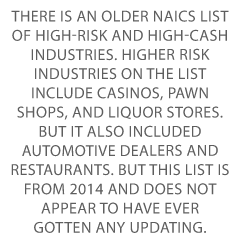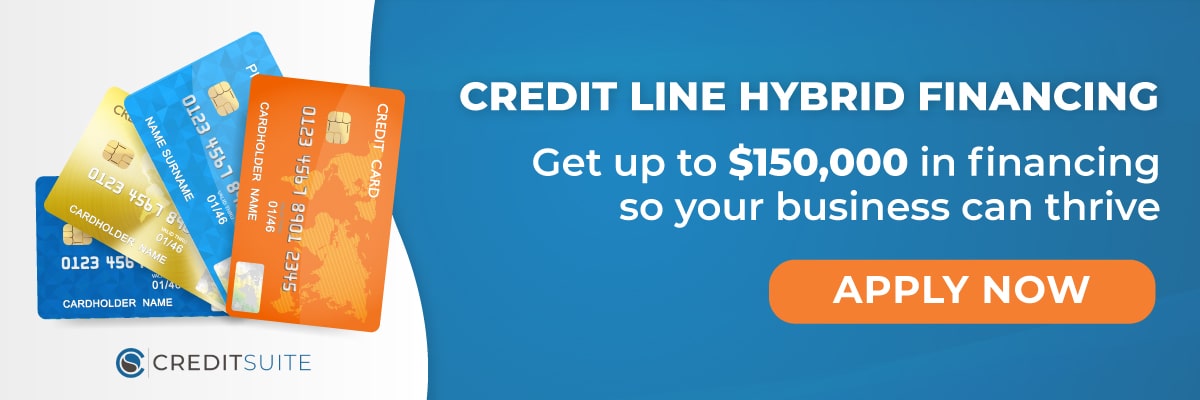
In Just a Few Minutes of Your Time, Learn All About Avoiding Risky NAICS Codes
What are NAICS Codes?
And how can they affect if you can get funding? We tell you all about NAICS Codes. They could be the difference between getting business money or not getting any money.
NAICS Codes: Some Background
Federal statistical agencies use the North American Industry Classification System (NAICS) . The idea is to classify business establishments. This is to collect, analyze, and publish statistical data, related to the U.S. business economy.
The NAICS was developed under the auspices of the Office of Management and Budget (OMB). Its adoption was in 1997. The intention is to replace the Standard Industrial Classification (SIC) system. The U.S. Economic Classification Policy Committee (ECPC) developed it with Statistics Canada and Mexico’s Instituto Nacional de Estadistica y Geografia. The intent was to make business stats easy to compare among North American countries.
What is the NAICS Structure and How Many Digits are in an NAICS Code?
NAICS is a 2- through 6-digit hierarchical classification system. It offers five levels of detail. Each digit in the code is part of a series of progressively narrower categories. The more digits in the code, the more classification detail.
Details on NAICS Code Structure
The first two digits are the economic sector. The third digit designates the subsector. And the fourth digit designates the industry group. The fifth digit designates the NAICS industry. The sixth digit designates the national industry.
A 5-digit NAICS code is comparable in code and definitions for most of the NAICS sectors. This is across the three countries participating in NAICS. They are the United States, Canada, and Mexico. The 6-digit level lets the U.S., Canada, and Mexico all have country-specific detail. A complete and valid NAICS code has six digits.
Codes and Industries
NAICS industry codes define businesses based on the primary activities they engage in. Recently, the NAICS changed many of its codes as it updated its philosophy. It no longer sets aside online businesses. Now the NAICS no longer distinguishes businesses by how they deliver goods or services.
High Risk NAICS Codes
There is an older NAICS list of high-risk and high-cash industries. Higher risk industries on the list include casinos, pawn shops, and liquor stores. But it also included automotive dealers and restaurants. But this list is from 2014 and does not appear to have ever gotten any updating.
Per the NAICS, various professionals in the banking industry compiled the list. The idea was to use it as a working guide. But it is not an officially sanctioned list. They do not guarantee the accuracy of this list.
Codes and Risk
When considering any aspects of a business, risk must be a major factor. There are inherent issues in every single industry. But some businesses are considered to be risky by their very nature. This is the case even if everything else goes off like a hitch and the business is prospering. Risk is inherent within these business types. Even if your business doesn’t feel risky, it could be anyway.
Learn more here and get started with building business credit with your company’s EIN and not your SSN.
Why Risk Matters
The biggest reason why risk matters has to do with funding. There are several industries where lending institutions are hesitant to do business. In those particular cases, there are stricter underwriting guidelines. But at least a company can get funding.
In some industries, no funding is available at all. As a result, those businesses will need to find other solutions for financing. These solutions can include:
- Crowdfunding
- Angel investors
- Venture capital
- Business credit building and more
Still, a lot of businesses would rather work with lenders. But where are lenders’ ideas of the degree of risk coming from? One clue comes from the CDC.
Real Injury Risks According to the CDC
The Centers for Disease Control looks at risks in small businesses. Part of the calculation of risk comes from occupational injuries. But the other side of the risk coin is occupations which are high in cash transactions. After all, a pawn shop might not have much of a specific risk of injury at all. But the large amounts of cash normally associated with one mean it can be a tempting target for thieves.
A Look at Some Restricted Industries
These industries (among many others) can get an automatic decline:
- Ammunition or weapons manufacturing; wholesale and retail
- Energy, oil trading, or petroleum extraction or production
- Gaming or gambling activities
- Loans for the speculative purchases of securities or goods
- Political campaigns, candidates, or committees
- Public administration
- City, county, state, and federal governmental agencies
- X-rated products or entertainment
Learn more here and get started with building business credit with your company’s EIN and not your SSN.
A Look at Some High-Risk Industries
These industries (among many others) can be subject to stricter underwriting guidelines:
- Auto, RV or boat sales
- Computer and software related services including programming
- Dry cleaners
- Gas stations or convenience stores
- Limousine services
- Long distance or “over-the-road” trucking
- Mobile or manufactured home sales
- Phone sales and direct selling establishments
- Real estate agents/brokers
- Real estate developers or land sub-dividers
- Restaurants or drinking establishments
- Taxi cabs
- This includes buying cab medallions
- Travel agencies
A Look at Some High-Risk NAICS Codes
According to the older list, the following codes are among those considered to be high risk:
- 445310 – Beer, Wine, and Liquor Stores
- 424940 – Tobacco and Tobacco Product Merchant Wholesalers
- 811113 – Automotive Transmission Repair
How do you choose a better code?
Using a Different NAICS Code
Of course you want to be 100% honest when it comes to selecting your NAICS code. But if more than one can apply, you don’t have to choose the one that’s higher risk. So it pays to check and be careful when making your selection.
Also, if only high risk codes apply, there’s nothing wrong with changing your business. Then you may be able to match a related but lower risk code. There is nothing underhanded or dishonest about doing this.
An Example of How to Switch an NAICS Code
Let’s say your business is automotive transmission repair (NAICS Code 811113). We know this is a high risk code. But 811191 is not on the NAICS list. It covers Automotive Oil Change and Lubrication Shops. So why not offer oil changes and use the lower risk code? It could be the difference between getting funding, or not.
Which Agencies Use NAICS Codes?
The Internal Revenue Service will use the NAICS code you select. This is to see if your business tax returns are comparable to other businesses in your industry. If your deductions do not reasonably resemble other businesses in your industry, your business could be subject to an audit.
The IRS may label some companies as high-risk when they do not choose the right NAICS code. But if you know how the system works, then you can choose the correct code on your first try.
Learn more here and get started with building business credit with your company’s EIN and not your SSN.
Which Agencies Other Than the IRS Use These Codes?
Lenders, banks, insurance companies, and business CRAs all use codes. They tend to use both NAICS and SIC Codes. SIC Codes are the older business classification system. D&B uses both SIC and NAICS Codes.
OSHA uses NAICS Codes for industry identification in its data. These agencies use them to determine if your business is in a high-risk industry. So you could get a loan or business credit card denial based on your business classification. Some SIC codes in particular can trigger automatic turn-downs. You could end up paying higher premiums, and get reduced credit limits for your business.
There Are No Guarantees in Life
Will a better NAICS code guarantee funding for your business venture? Of course it won’t. But at least your business will not be automatically turned down before you can make a case for funding.
NAICS Codes: Takeaways
Industries are defined by codes from the North American Industry Classification System. Codes go up to six digits for the most granular information. Some codes are always associated with high risk. This makes it harder to get business funding. So if more than one NAICS code can apply to your business, pick the one that’s less risky.
The post In Just a Few Minutes of Your Time, Learn All About Avoiding Risky NAICS Codes appeared first on Credit Suite.
The post In Just a Few Minutes of Your Time, Learn All About Avoiding Risky NAICS Codes appeared first on Automation For Your Email Marketing Sales Funnel.
The post In Just a Few Minutes of Your Time, Learn All About Avoiding Risky NAICS Codes appeared first on Buy It At A Bargain – Deals And Reviews.



